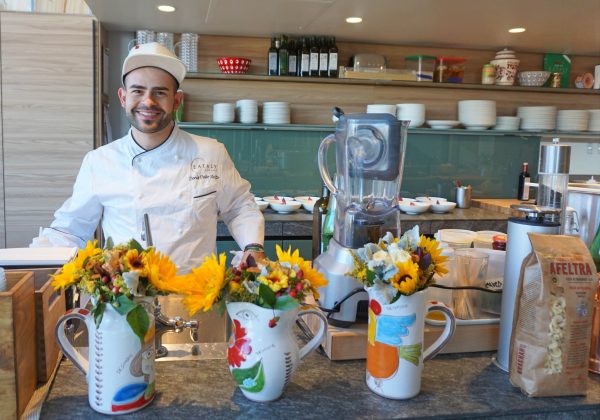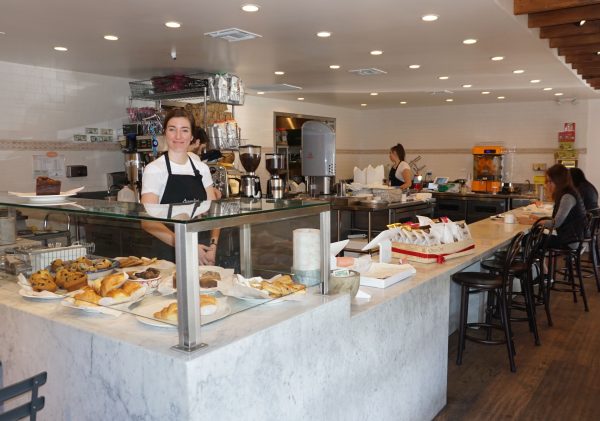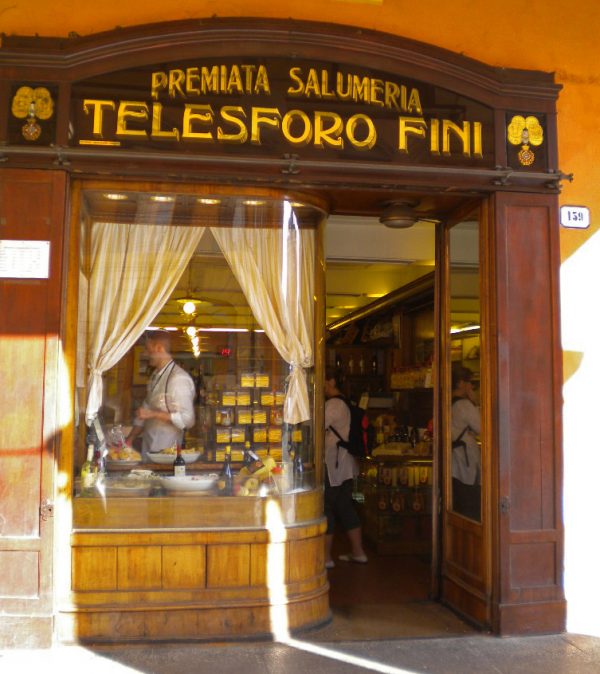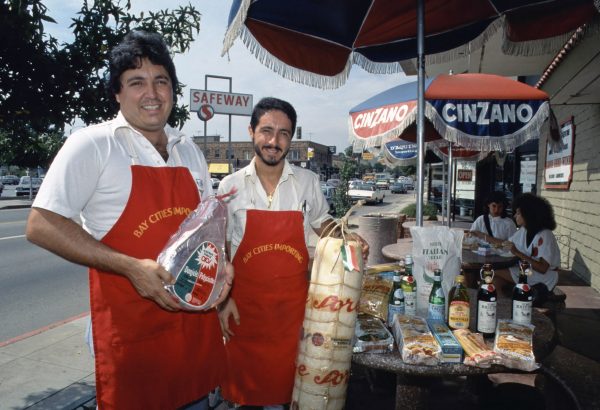Last Saturday I observed a cooking class at La Scuola (the school) of Eataly LA in Century City. I was intrigued because the focus was on tortellini, the stuffed pasta delicacy that is a specialty of my hometown, Modena.

Tortellini in brodo (cooked in chicken broth) is an ancient recipe that dates back centuries to the year 1570. Legend has it that the unique shape of this dumpling was inspired by the belly button of Venus (ombelico di Venere), the goddess of love, who stayed at a tavern in Castelfranco Emilia, a small town in the province of Modena. More about tortellini here.
I have a special affection for this dish, because many Saturday afternoons of my childhood, in preparation for Sunday lunch, I helped my mother Dina and grandmother Ermelinda place the stuffing into the tiny fresh egg pasta squares, fold them into a triangle, lift the point backwards, roll around your index finger and pinch them closed. It’s a labor-intensive task, that is why the whole family is enlisted to help, including children.
The shape is identical to that of the larger tortelloni, that are usually stuffed with spinach and ricotta, but different from cappelletti (little hats), that have a round not pointy tip.

La Scuola Chef Denis Dello Stritto from Napoli explains to the students how fresh pasta made with eggs and flour is soft and very different from the hard dry pasta made with semolina, that you buy packaged, like the DeCecco brand from Abruzzo, and comes in various shapes from maccheroni to spaghetti. Denis had already prepared the tortellini stuffing, with ground pork sautéed in butter, mortadella, prosciutto, Parmigiano-Reggiano, egg and nutmeg. Tools and ingredients were laid out on a long table for the kneading of flour and eggs to make the pasta, the flattening of the dough very thin with a mattarello (rolling pin), and the cutting into small squares.

I was impressed by the welcome appetizer of burrata and prosciutto cotto (cooked ham), paired with a sparkling Prosecco. At the end of the class, tortellini cooked in broth were accompanied by a white wine from from Sicily, selected by Beverage Manager Luigi Capasso.
For a list of upcoming “Hands On” classes click here.

Eataly’s School offers another type of class called “Chef’s Table,” meetings with famous chefs and tastings of their signature recipes. The first one was January 17 with Gino Angelini, who opened Angelini Osteria in 2001, and a casual cafe next door last year. I love his lasagna verde “Nonna Elvira”, from his grandmother’s recipe. Gino is from San Clemente near Rimini (the birthplace of Federico Fellini, lovingly “remembered” in Amarcord), in the region of Emilia Romagna, like Modena, Bologna, Reggio and Parma.

Many regions of Italy have a dish called lasagne, but prepared in different ways. In the US old-school Italian-American restaurants often prepare a Southern version, with thick wavy dry white pasta, tomato sauce and mozzarella. Read how that happened in this article. While lasagne from Modena are made with fresh green spinach egg pasta, layered with ragu of ground pork, béchamel (besciamella) and Parmigiano, then baked in the oven.
My favorites are the lasagne from the Telesforo Fini store, open in Modena from 1912 to 2014. Today you may still taste this and other local specialties at the Hotel Real Fini-Baia del Re.
I sometimes ask Francesco of Pasta Sisters to make their lasagne to order for me and my guests with green dough, rather than the white fresh pasta that is typical of their family’s hometown of Padova. I can’t wait for their new restaurant to open in Culver City, closer to where I live than their Pico and Arlington take-out location, so I can enjoy their egg pasta dishes and potato gnocchi more often.

If you are not up to the task of making your own tortellini, there is finally one place in Los Angeles that serves them the way I remember tasting them when I was in Modena last year, at Trattoria Aldina, a traditional restaurant still popular after 100 years. This new Santa Monica restaurant is called Uovo (egg), from the fresh egg pasta they serve, that they have made in Bologna to ensure its authenticity. As chef Gianni Pucci from Firenze explains, the tortellini are then stuffed and shaped by hand by three women in a commercial kitchen in Inglewood. Uovo also serves lasagne and tagliatelle (noodles), the most common kind of fresh egg pasta, and the easiest to make. During the 2-weeks of DineLA, February 12-26, Uovo’s lunch menu is tagliatelle bolognese and cavolfiore al forno (roasted cauliflower). I plan to go there this week and taste this pasta dish that I often prepare at home for my family and friends.

I also plan to cook the Cotechino di Modena that I bought last week at Bay Cities, the Italian market in Santa Monica where I’ve been shopping since the 1970s. This is another ancient winter favorite originated in 1511 in the town of Mirandola; it’s a large sausage of savory ground pork, usually served with lentils and mashed potatoes (lenticchie e purè di patate).
For more culinary specialties from Modena, and other civic glories of my hometown, please read Italian Bread, Modena-style.
For more about Eataly in LA click here.
